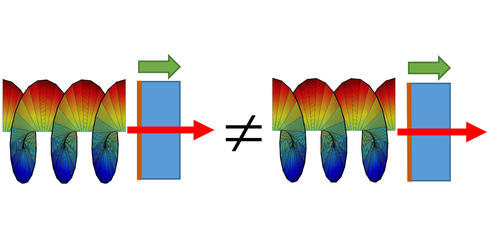Optical Vortices Can Probe Magnetism
Circularly polarized light can act as a powerful probe of magnetism in matter. By measuring differences in the transmission of light beams polarized in different directions as they pass through a material, physicists can unravel atomic-level details of the material’s magnetic properties. Now Andrei Sirenko of the New Jersey Institute of Technology, Newark, and colleagues have demonstrated a similar effect using an optical vortex, where light propagates in a pattern resembling a corkscrew. The team says that optical vortices can be more sensitive to magnetic effects than circularly polarized light, potentially allowing the technique to be applied to new kinds of systems.
In their experiments, Sirenko and colleagues aimed terahertz optical vortices at samples of dysprosium iron garnet, a well-studied rare-earth magnetic material that is transparent to light at these frequencies. They measured the transmission spectra for vortices that twisted in clockwise and counterclockwise directions. The spectra showed strong evidence of dichroism, which in this case meant that the amount of light transmitted at a given frequency depended on the direction of the vortex twist and also on the direction of the magnetic fields within the material. They found that this vortex dichroism was stronger than that observed for circularly polarized light.
Conventional polarization-based probes couple primarily to magnetic fields arising from particle spins. But the team says that vortex probes should be sensitive to the so-called orbital magnetism generated by nonlinear patterns in a magnetic material. The plans are ambitious, says Sirenko, but the team sees their demonstration as a first small step toward studying this relatively unexplored area of magnetism.
This research is published in Physical Review Letters.
–Christopher Crockett
Christopher Crockett is a freelance writer based in Arlington, Virginia.





